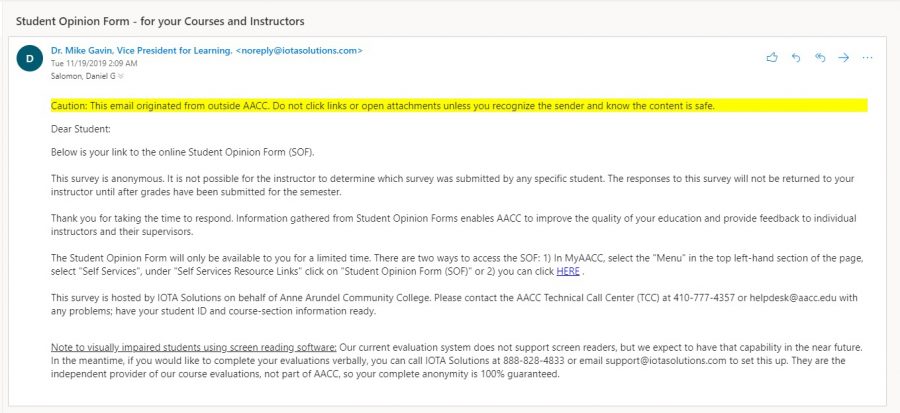AACC combats phishing
December 3, 2019
AACC added bright yellow warning labels on emails originating outside of the college as of Nov. 5.
These labels are to prevent phishing, which is when someone attempts to steal information from an individual by sending what appears to be a legitimate email, according to Director of Information Security John Williams.
Williams said if students click on a link or share information in reply to these suspicious emails, their accounts may be hacked.
“It’s one of the primary [ways] that hackers gain information,” Williams said. “That’s the No. 1 threat factor.”
According to Chief Technology Officer Shirin Goodarzi, phishing is becoming more sophisticated, and these emails from phishers can be hard to tell apart from safe communication.
Often these emails appear to come from people students know to lull them into a false sense of security. Goodarzi said the new labels will draw attention to these emails so students will give the message more scrutiny.
Goodarzi noted phishers often target students because of perks that may come with their accounts, such as free Microsoft Office. If students share their account information in reply to a phishing email, the phisher can access these perks.
Students said they think the new labels are a good idea.
“You can pretend to be anybody online,” Veronica Poquette, a first-year transfer studies student, said. “It’s a good idea because people might not realize it on their own that this is not a good idea to follow the link or reply to [the] email.”
“That’s great,” Kalli Bellotte, a first-year transfer studies student, said about the labeled emails. “That’s helpful. … I think that you would always assume that [an email from AACC] is from a trusted source.”
But Bellotte said she doesn’t think phishing is as much of a problem for the younger generation.
“I can look at something and pretty much know instantly most of the time, ‘Oh, that’s fake,’” Bellotte said.












